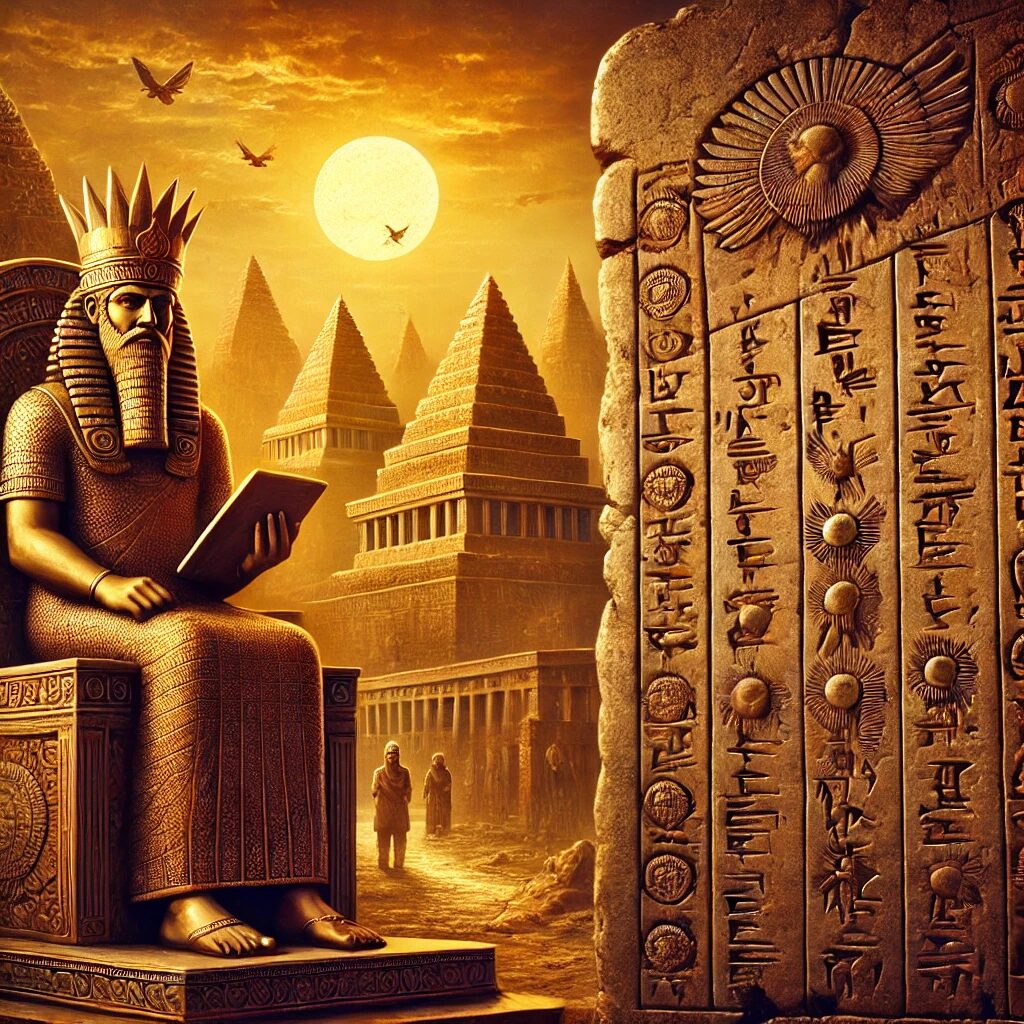Sumerian Kings List and 241,000 Years of Rule ]
End The Fed – By Ron Paul (CLICK HERE TO BUY)
Greetings, history buffs and curious minds! Today, we’re diving deep into one of the most enigmatic documents of the ancient world: the Sumerian Kings List. This ancient text doesn’t just record rulers—it spins tales of kings who supposedly reigned for tens of thousands of years. If that doesn’t catch your attention, nothing will! So grab your historical detective hats, and let’s unravel the mystery of this fascinating relic.
The Basics: What is the Sumerian Kings List?
The Sumerian Kings List is an ancient manuscript etched onto clay tablets in cuneiform script. It catalogs the names of kings who ruled over Sumer, the earliest known civilization located in southern Mesopotamia (modern-day Iraq). What sets this list apart is its combination of myth and history—blurring the lines between the two in a way that leaves modern scholars both intrigued and puzzled.
According to the list, the first king of Sumer was Alulim, who allegedly ruled for a jaw-dropping 28,800 years. Yes, you read that right—28,800 years! And he wasn’t the only one. Other early kings are said to have ruled for tens of thousands of years, totaling an incredible 241,000 years of rule before a great flood swept across the land.
Myth or Reality? The Debate
The astronomical reigns of these early kings have sparked endless debate among historians and archaeologists. Could these numbers possibly be literal? Most scholars think not, but the reasons behind the exaggerated reigns are where the conversation gets interesting.
1. Symbolism of Divine Rule
One common interpretation is that the extended reigns symbolize divine kingship. In ancient Sumerian belief, kings were considered intermediaries between the gods and humanity. By assigning these kings impossibly long reigns, the Sumerians may have been emphasizing their divine or semi-divine status. These lengthy reigns could signify that these rulers were seen as eternal figures who shaped the cosmos under divine guidance.
2. Exaggeration for Legitimacy
Another theory is that the exaggerated reigns served a political purpose. Ancient rulers may have used the Kings List to legitimize their authority by connecting themselves to an unbroken line of illustrious, almost god-like predecessors. This practice of associating current rulers with mythical or legendary figures wasn’t unique to Sumer—similar patterns can be seen in ancient Egypt, China, and even medieval Europe.
3. Echoes of Oral Tradition
It’s also possible that the Kings List reflects oral traditions that evolved over centuries. Stories of long-lived rulers may have been passed down, exaggerated, and mythologized over time, eventually finding their way into written records. This blending of history and myth provides us with a window into the Sumerians’ worldview and their understanding of kingship.
The Historical Value of the Kings List
While the absurdly long reigns might stretch the limits of believability, the Sumerian Kings List remains an invaluable document for understanding the early history of Mesopotamia.
1. A Timeline of Dynasties
The list offers a chronological sequence of rulers, dynasties, and cities that held power over Sumer. Later entries on the list, which describe reigns of more realistic lengths, align with archaeological evidence, giving us glimpses into the rise and fall of different city-states like Uruk, Ur, and Kish.
2. Cultural Insights
The Kings List also reveals the Sumerians’ perception of history and their relationship with the divine. It shows how they viewed kingship not just as a political role but as a cosmic institution tied to the will of the gods.
3. The Great Flood Connection
Interestingly, the Kings List references a great flood that interrupted the rule of kings. This aligns with flood myths found in other ancient texts, such as the Epic of Gilgamesh and the biblical story of Noah. These parallels hint at a shared cultural memory of a catastrophic event in the region.
Lessons from the Sumerian Kings List
The Sumerian Kings List is more than just a quirky artifact with exaggerated numbers. It’s a testament to the rich imagination, religious beliefs, and political structures of one of the world’s first civilizations.
By studying this ancient text, we’re reminded of how human beings across time have sought to make sense of their world—blending myth, history, and culture into narratives that endure for millennia.
So the next time you hear someone talking about ancient kings with reigns longer than recorded history itself, remember that behind the fantastical numbers lies a story of humanity’s enduring quest for meaning and order in the cosmos.
References
- “Sumerian Kings List and 241,000 Years of Rule,” A Hot Cup of Joe: Read here
- Kramer, Samuel Noah. History Begins at Sumer.
- Black, Jeremy, and Green, Anthony. Gods, Demons, and Symbols of Ancient Mesopotamia.
- Leick, Gwendolyn. Mesopotamia: The Invention of the City.










No Comments